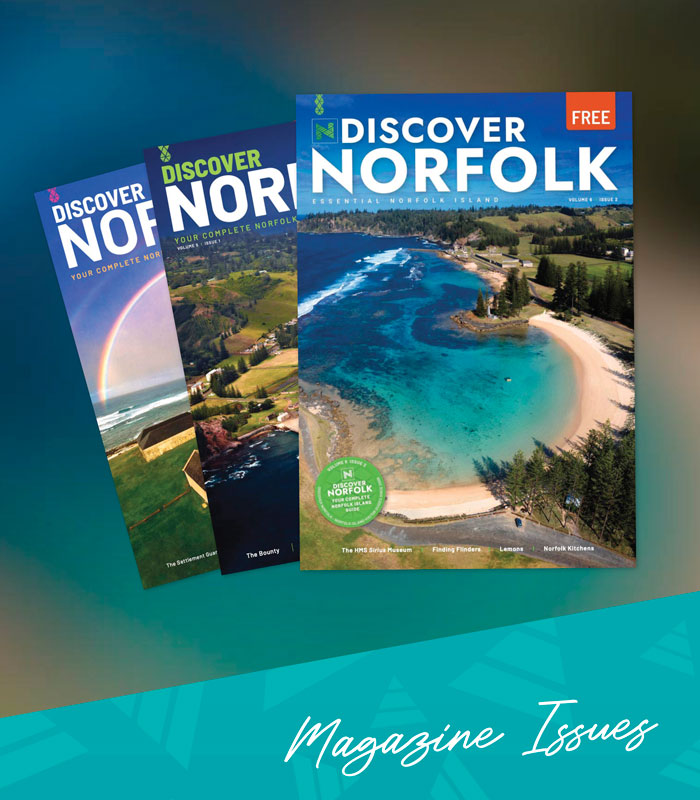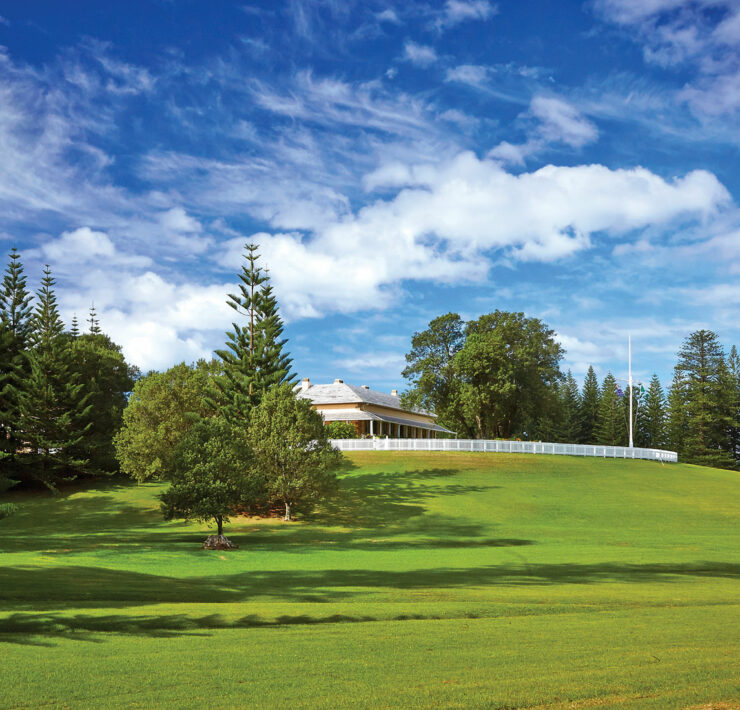
During autumn, under the right conditions of warmth and rainfall, a colourful display of fungi appears in the rainforest on Norfolk Island. These fungi grow in the forest litter and on dead wood, including stumps, logs and trees, feeding on the decaying organic matter. In autumn they produce their often colourful ‘flowering’ or ‘fruiting’ bodies; these are the organs that produce the spore that ensures the next generation of fungi. Mostly, the fungus is unseen under the ground, consisting of microscopic threads called hyphae; collectively these are known as the mycelium. It is only when the mycelium sends up its reproductive part (fruit-body), such as the familiar mushroom, that their presence becomes obvious. These relatively large fungi are called macro-fungi. Micro-fungi, on the other hand, are very small and seldom noticed, although they are very common. Macro-fungi are those fungi where the fruit-body (or sporocarp) can be seen with the naked eye.
Fungi are usually classified close to the plants, although they have a very different lifestyle to plants. The main difference is that the fungi do not produce their own food, but extract nutrients from organic matter; plants photosynthesise to produce some of their own food. The fungi are therefore placed in a separate Kingdom to the plants. The fungi are an important component of a forest ecosystem; they are nature’s recyclers, breaking down organic matter and releasing nutrients for use by other organisms.
The best known fungi are the mushrooms and toadstools; including the edible field mushroom. In open situations, often on paddocks, a fungus may spread out from a central point, using up the organic matter in the soil as it expands outwards. Eventually a ‘fairy ring’ may be formed, a perfect circle of mushrooms, a phenomenon that has persisted in folklore for thousands of years.
Another common group of fungi produce hard bodies on dead tree trunks and logs, these are often called bracket fungi. The edges of these fungi grow outwards year by year so that they become larger as time passes; these fungi can reach a very large size. At the other extreme, careful inspection of the forest floor may discover delicate white, orange or red fungi not much bigger than a match head.
Fungi produce spores that are dispersed by wind, water and animals. Colourful fungi have probably evolved to attract invertebrate animals that spread the spore attached to their bodies after visiting a fruit-body. Some types of fungi, such as the Red Starfish Fungus, produce a smell likened to rotting meat; this attracts flies that unintentionally disperse the spores. Fungi can also be luminescent, that is they glow in the dark of the night. Luminescence in the fungi is due to metabolic activity and is likely to be used as an attractant to night-flying insects. About 50 species of macro-fungi have been recorded on Norfolk Island, although little research has been undertaken on this group and no comprehensive study has been published. These fungi range from species that produce tiny fruiting bodies a couple of millimetres wide to large diner plate sized toadstools. The accompanying photographs show just how variable are the Norfolk Island species of fungi.
If the environmental conditions are right, many species of fungi may be seen along the walking tracks in the national park. Look – but do not eat! A useful maxim, as some species are poisonous.
____
Image Credit: Robin Nisbet
www.robinnisbet.com
____
Article content disclaimer: Article first published in YourWorld, Volume 02 Issue 03, 2012. Please note that details of specific travel, accommodation and touring options may be outdated. References to people, places and businesses, including operating days and times may be have changed. References to Government structure and Government businesses/entities may no longer be applicable. Please check directly with businesses and/or Government websites directly rather than relying on any information contained in this article before you make travel arrangements.



















